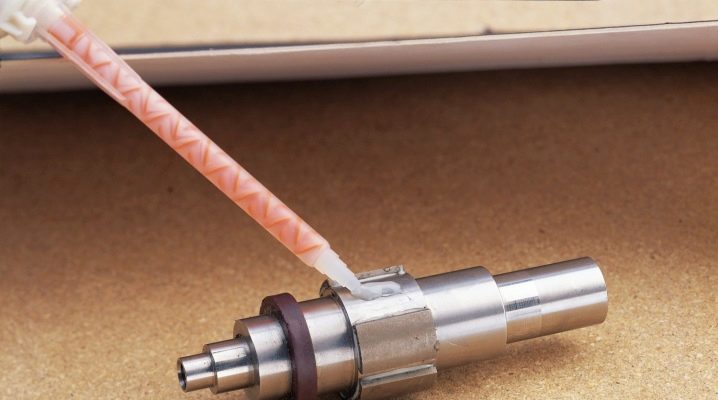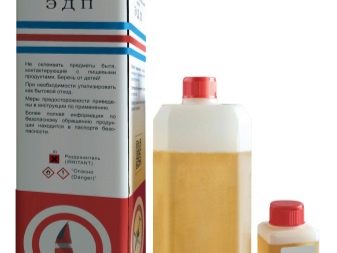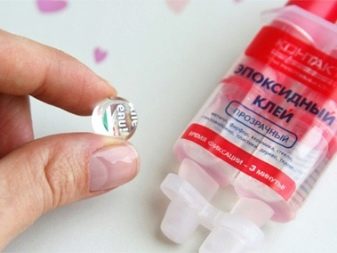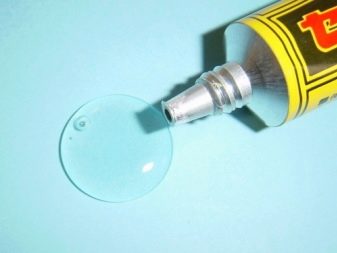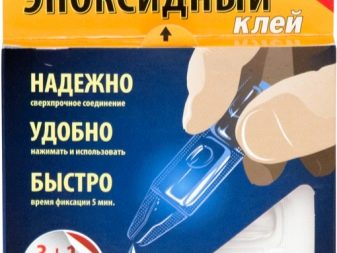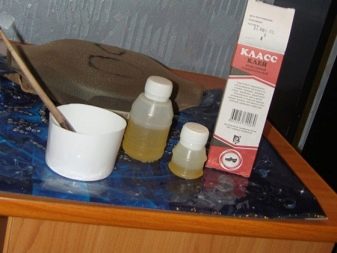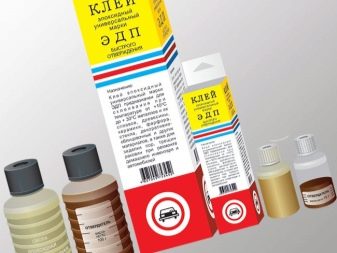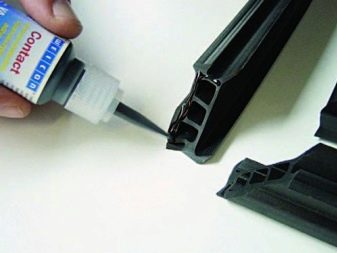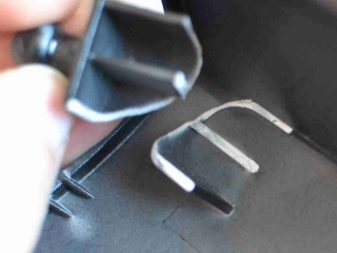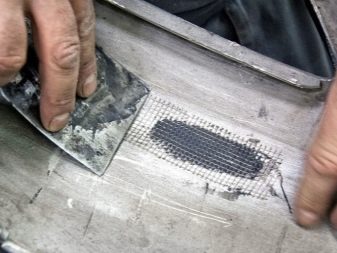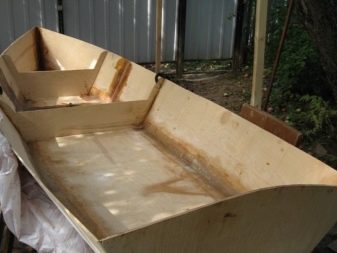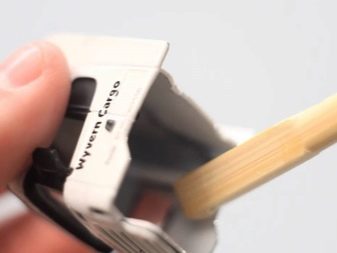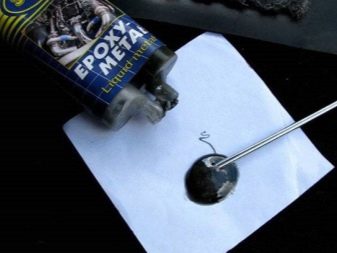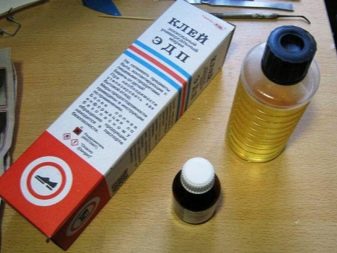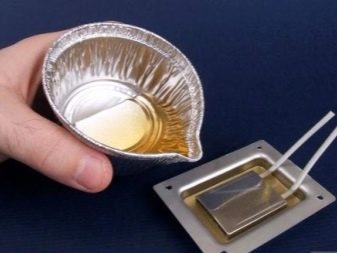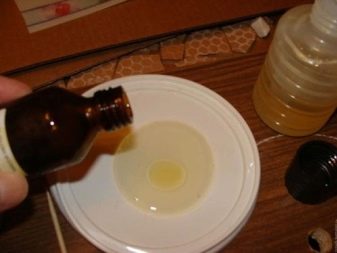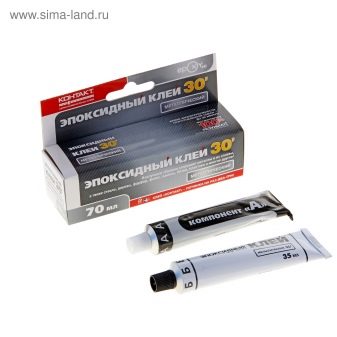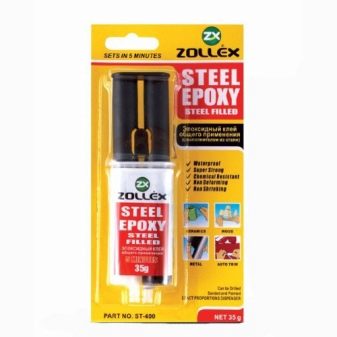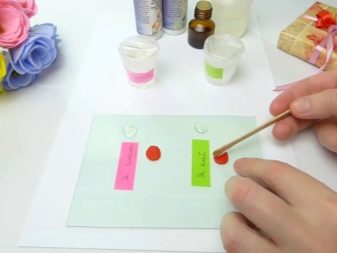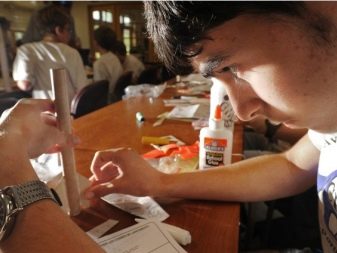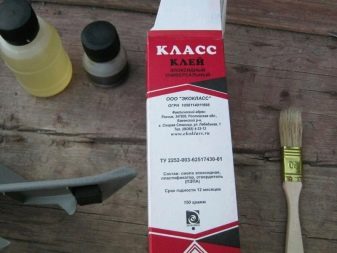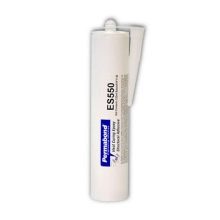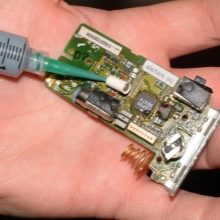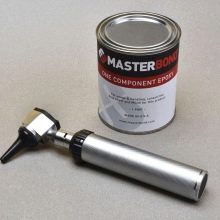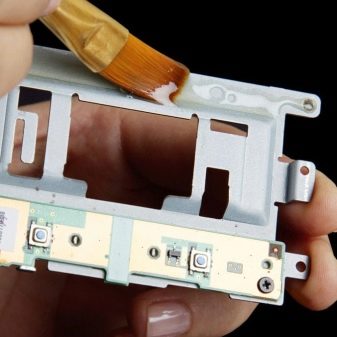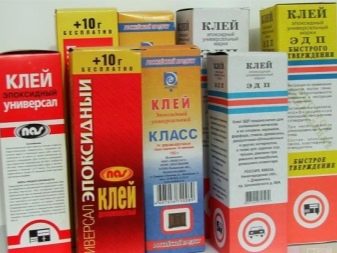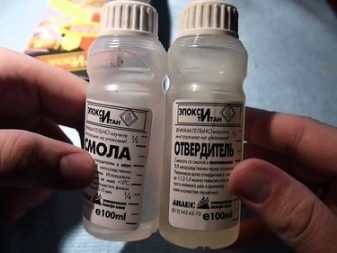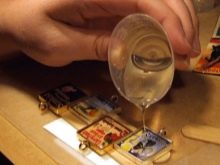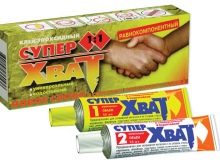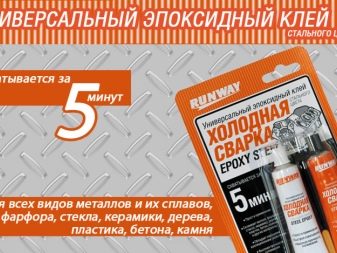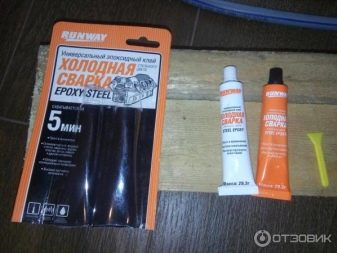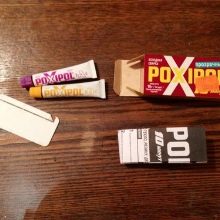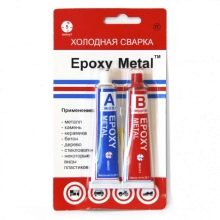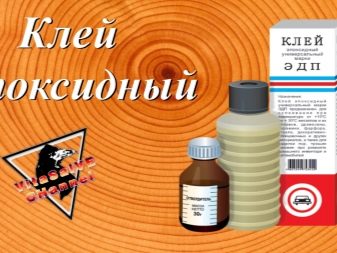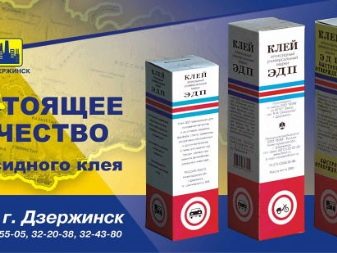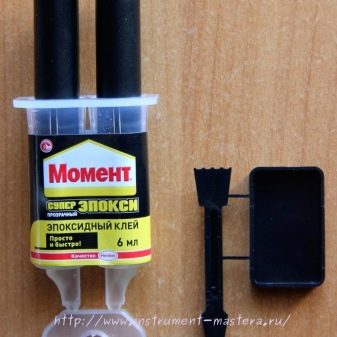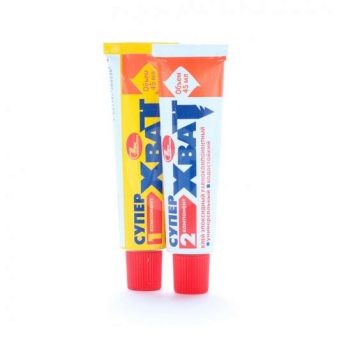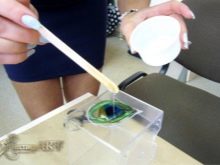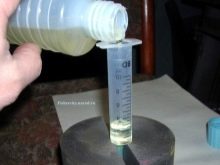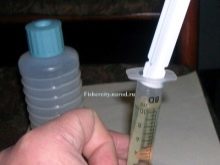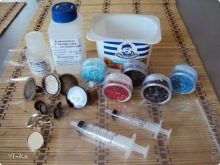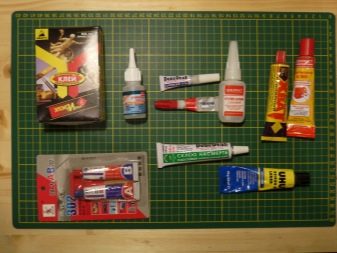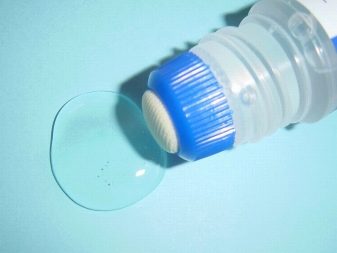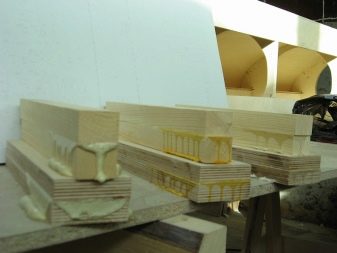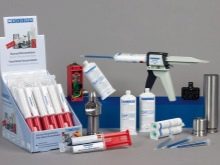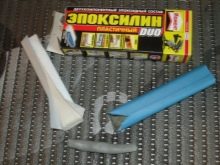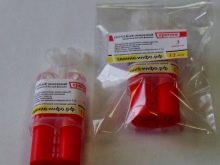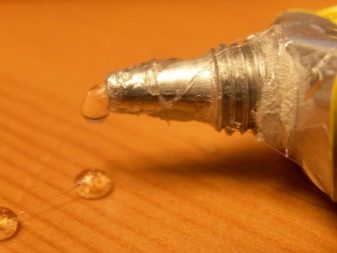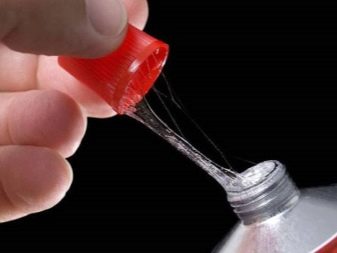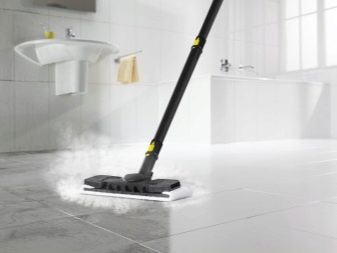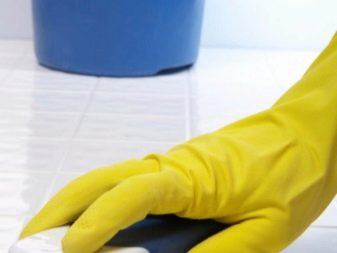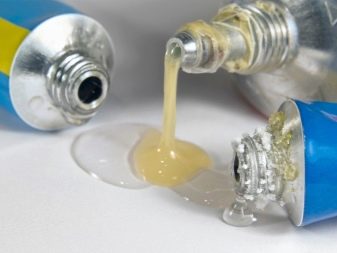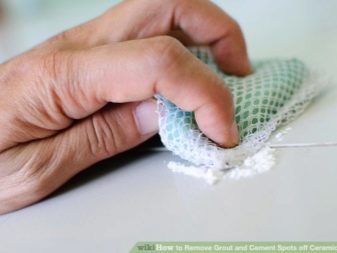Epoxy glue: types, properties and characteristics
For bonding parts of various materials used adhesive compositions based on binders. Casein, starch, rubber, dextrin, polyurethane, resin, silicate and other natural and synthetic compounds can act as the main component. Each glue has its own characteristics and scope. Universal high-tech composition is considered to be an adhesive mixture based on epoxy resin.
What it is?
The main component in epoxy glue is epoxy resin. This is a synthetic oligomer that is not suitable for independent use. Synthetic resin has been widely used in the manufacture of paint and varnish and finishing materials.Depending on the manufacturer and brand, the resin may be a liquid honey-colored consistency or a dark solid mass.
In the package with epoxy glue there are two components. There is a significant difference between them. In order to get epoxy resin adhesive properties, hardeners are added to it. Polyethylene polyamine, triethylene tetramine and anhydrite are used as a hardening component. The hardener with epoxy resin is able to form a solid polymer structure.
Epoxide, entering into a polymerization reaction with a hardener, combines the molecules of the material and becomes resistant to mechanical and chemical influences.
Properties and scope
The popularity of epoxy cause its positive qualities.
Epoxy adhesive mixture exhibits the following properties:
- forms a non-shrink seam without cracks;
- high adhesion to various materials;
- resistance to chemical solvents, alkalis and oils;
- heat resistance up to +250 gadus;
- frost resistance up to -20 degrees;
- strength to mechanical stress;
- elasticity allows drilling and grinding the seam without chipping;
- hardened glue can be painted and varnished;
- does not conduct electric current;
- the curing rate does not depend on the thickness of the adhesive layer;
- the ability to add to the composition of additional components;
- moisture resistance;
- weather resistance;
- wear resistance.
Fillers can be added to the epoxy mixture to improve the properties of the original product or to change the color. The addition of aluminum in the form of powder increases the thermal conductivity and strength of the product.
The introduction of asbestos increases heat resistance and hardness. Titanium dioxide gives white color to the whole solution. Iron oxide will help to achieve red color and fire resistance. Iron powder will increase the coefficient of thermal conductivity and heat resistance. Reduce viscosity and harden epoxy mixture of silicon dioxide. Soot will give black color to the glue. Increase the strength and dielectric properties of alumina. Glass fibers and sawdust will add significant volume when filling large voids.
The downside when using epoxy glue is the setting speed. In a short period of time you need to apply and fix the glue line,remove excess glue and clean the work area and hands. After hardening of the adhesive composition, removal is performed only with a strong mechanical action. The quicker the cleaning of sticky epoxy begins, the easier it is to clean the contamination with minimal effort.
Epoxy mixture can not glue objects in contact with food. Nickel, tin, Teflon, chromium, zinc, polyethylene, silicone can not be glued. Soft materials are destroyed by contact with the resin-based composition.
Due to the large number of unique properties, adhesive epoxy mixture has been widely used in various sectors of the national economy. Epoxy solution is used in various fields.
- In the construction industry. The adhesive composition is used to fill the cracks of concrete, cement screeds, reinforced concrete beams and slabs, further reinforcing the entire structure. Used to connect the iron and concrete elements in the bridge. Epoxy glued sections of building panels. It gives the waterproofing properties of insulation and chipboard, reduces heat loss, creating tightness in the sandwich panels.During finishing works with tile and mosaic, an epoxy mixture is used as an adhesive solution, which quickly hardens and has water-repellent properties.
- In the automotive industry. On the production of epoxy glue brake pads are attached, fasten plastic and metal surfaces, used in automotive repair work for metal and plastic. It helps to seal the defects in the back and gas tank, to restore the skin.
- In the manufacture of ships and aircraft. During the construction of watercraft with an epoxy composition, the hull is treated to impart water-repellent properties to the material, used to join parts of fiberglass, fixing technological components. When assembling aircraft epoxy glue attached heat shield elements. Used epoxy for the production and fixation of solar cells.
- At home. With the help of epoxy glue, you can repair furniture, shoes, repair plastic, metal and wooden parts of the decor and technology. You can seal the crack of the aquarium and collect fragments of a glass vase or ceiling. The epoxy will glue the chipped porcelain stoneware and seal the gap in the ceramic tile, securely fix the hooks and holders on the wall.Epoxy composition is suitable for sealing sewer and water pipes, heating elements. Epoxy was widely used in needlework for creating handicrafts and souvenirs. Apply it to the fastening of decorative elements in the manufacture of jewelry and hair accessories. Glue sequins, semi-beads, satin ribbons, lace, polymer clay and other materials.
Specifications
Epoxy adhesive mixture is a synthetic mass in which an irreversible chemical reaction takes place with the formation of a durable material. The resin-based adhesive may include a modifier, a hardener, a solvent, fillers, plasticizers.
The main component in the adhesive composition is epoxy resin. It also consists of epichlorohydrin with phenol or bisphenol. The resin may be subject to modification. Epoxy resin modified with rubber, can improve the characteristics of impact strength. Fororganic modifiers reduce the flammability of the product. The addition of the modifier laproksiva increases elasticity.
The hardener can be compounds of aminoamides, polyamines, organic acid anhydrides.Mixing the epoxy resin with the hardener allows you to start a thermosetting reaction. The share of hardeners is 5-15% of the resin.
Solvents can be xylene, alcohols, acetone. The solvent does not exceed the content of 3% of the total volume of the solution. Plasticizers contribute to increase the reliability of the fastened parts. To do this, use the ether compounds phthalic and phosphoric acid.
Fillers are used to impart mass and additional physical characteristics of the finished product. As a filler, dust of various metals, mineral powders, fibers, cement, sawdust, micropolymers are used. The number of additional fillers can vary from 1 to 300% by weight of the total epoxy resin.
Work with epoxy glue is carried out starting from +10 degrees. After the mixture hardens, as the temperature rises, the rate of complete curing increases. Depending on the composition, the hardening time can vary from 3 hours to 3 days.
The temperature range during operation is from -20 to +120 degrees. Especially strong adhesive compound withstands temperatures up to +250 degrees.
Epoxy adhesive has 3 hazard class according to the classification of GOST 12.1.007-76 and is a low-hazard irritant, but may cause an allergic reaction on the skin. For the environment, it is environmentally hazardous and poisonous when released into water.
The lifetime of the prepared mixture is from 5 minutes to two hours, depending on different manufacturers. The different composition of the adhesive shows strength from 100 to 400 kgf per 1 cm2. The average density per m3 is 1.37 tons. The elasticity of the impact and displacement of the seam is in the range of 1000-2000 MPa. The hardened epoxy layer shows resistance to gasoline, alkalis, acids, salts, oils, kerosene. Replaceable in toluene and acetone.
Epoxy compounds vary in volume and weight. In syringes pour the components of 6 and 25 ml. Dual syringes are convenient to use in everyday life for gluing small surfaces. Universal epoxy adhesive mixtures are characterized by a long-term viability of up to two hours and are produced in containers of 140, 280 and 1000 g. Epoxy of rapid curing approaches the speed of hardening to cold welding, is made in tubes of 45 and 70 ml and in buckets and bottles of 250 and 500 g . For industrial use, epoxy components are supplied in barrels of 15, 19 kg each.
In universal liquid epoxy compositions, the main color is white, yellowish and transparent. Glue for metals of a silvery, gray, brown shade. You can find epoxy produced in pink.
Kinds
Epoxy adhesive mixtures are divided into groups according to three characteristics: the number of components, the density of the mass, the method of polymerization. The composition of the adhesive can be one-component and two-component.
One pack present in one adhesive, it does not need preliminary preparation. Single component blends may solidify at room temperature or with increasing heat. The strength characteristics of such compounds are lower than in a two-component solution. More in demand on the market products in two separate packages. Two components are mixed before pasting. Universal epoxy two-component adhesive forms a flexible monolithic layer of high strength.
The finished formulations vary in thickness - liquid and clay.
The viscosity of liquid solutions depends on the consistency of the epoxy resin. To increase the flowability of the resin, it must be heated. Liquid glue is easy to apply, it fills all the pores of the material.When cured forms an elastic moisture-resistant seam.
The clay composition is similar in structure to plasticine. Available in the form of bars of different sizes. To work the mixture is kneaded by hand and carefully spread on the bonding surface. Often plastic mass has a dark metallic color, because it is used as cold welding. It is applied to seal holes and irregularities in the metal.
The method of polymerization depends on the hardener used. Liquid mixtures with hardeners from anhydrite and polyamine begin to harden under normal conditions. In order for the finished seam to be waterproof with enhanced protective properties against solvents, acids and oils, it is necessary to perform high-temperature heating. Enough exposure temperature at + 70-120 degrees. The ultrastrong layer is formed when heated at + 150-300 degrees. During hot curing, a heat-resistant layer with electrical protective properties is obtained.
Consumption
Glue consumption depends on the thickness of the coating layer. An average of 1.1 kg of epoxy is consumed per 1 m2 with a layer thickness of 1 mm. When gluing porous surfaces such as concrete, the flow rate of the mixture increases.It also increases costs when applying glue to wood boards and wood. To fill the cracks spend 1.1 g per 1 cm3 of emptiness.
Stamps
According to its quality characteristics, there are four grades of epoxy glue: Cold welding glue, EDP brand, Contact plastic mass, Moment brand liquid components.
Epoxy adhesive "Cold welding" designed for quick repair of metal products. It can be produced in the form of clay and liquid ingredients. It is characterized by high speed of hardening and special strength. It is a liquid or plastic epoxy mass that can solidify for 5-20 minutes.
Many manufacturers make this brand of glue. Foreign company Akapol releases epoxy glue "Poxipol" two consistencies. It hardens 10 minutes after mixing. Russian manufacturer Astat produces glue "Epoxy Metal" in liquid performance, rejection occurs in 5 minutes. Under the brand "Anles" manufactured products "Uniplast", "Epoxy-titanium" for metals. Under the brand name Runway sell glue "Epoxy steel".
EDP universal epoxy composition is suitable for many types of materials - wood, metal, plastic, earthenware, ceramics, rubber, textiles, glass, plaster, leather, concrete,stone, etc. Domestic manufacturer LLC NPK Astat manufactures EDP brand adhesive - epoxy-diano with polyethylene polyamine. Mixed composition can be used up to two hours at work. Within 24 hours, the finished glue line reaches its stated strength. LLC Group of Companies Himalyans produces adhesive brand EDP with a viability of up to one and a half hours. JSC "Anles" manufactures brand analog EDP Universal Epoxy Adhesive. Ecoclass Ltd. carries out the production of universal epoxy under the brand "Class". Under the brand name "Himkontakt" sell all-purpose epoxy glue "Himkontakt-Epoksi".
Epoxy mixtures brand "Contact" represent a plastic quickly hardening mass. It is characterized by an elevated tempera limit of -40 to +140 degrees. The composition is capable of gluing on a wet surface.
Convenient for use in everyday life epoxy solution "Moment". Brand is popular Henkel's Moment. It produces two lines of epoxy compounds - two-component liquid glue. "Super Epoxy" in tubes and syringes of different sizes and "Epoxy"packaged in 30, 48, 100 and 240 grams.Positive feedback is available from epoxy equal component adhesive. "Super-grip" production ZAO Petrokhim. Consumers have noted ease of use when mixing components.
Instructions for preparation and use
Work better in a ventilated area, so as not to irritate the respiratory organs with epoxy fumes. You need to wear protective gloves and clothes that you do not mind getting dirty. The place of work can be covered with a newspaper or a cloth so as not to contaminate the surface. Prepare the application tool and mixing container in advance. You can use disposable dishes.
After preparing the workplace, it is necessary to treat the surface that needs to be glued. For better adhesion, the material is degreased, sanded and dried.
Processing of the product is carried out before mixing the adhesive, since the solution must be applied immediately after production.
Before you start preparing the epoxy mixture with your own hands, you need to study the manufacturer's instructions attached to the package. It shows the proportions of the components of the resin and hardener.Different manufacturers have different ratios of substances. In universal adhesive liquid formulations it is usually necessary to mix 1 part of hardener and 10 parts of epoxy resin.
If the epoxy resin is viscous, it will be difficult to mix the components. To easily dilute the resin, it must be heated on a water bath or radiator to 50-60 degrees. Using a syringe without a needle, you need to measure a small amount of resin and pour into the container. Then collect the desired portion of the hardener and dissolve in the resin, mixing intensively to obtain a homogeneous mass.
After mixing the components proceed to gluing the surfaces. On one side it is necessary to put the finished glue and with an effort to press both halves, fixing for 10 minutes without displacement. If a small amount of the solution is squeezed out of the seam, it should be immediately removed with a napkin. Until the epoxy mixture is completely cured, the product cannot be used and subjected to stress.
Sawdust and other fillers can be added to the prepared epoxy solution, which give additional volume, improve the quality of the finished compound and give the desired color.If you make sawdust in epoxy, then the mixture should be filled with the form. You can use a separator to make an item. Frozen parts can be sanded, painted and drilled.
In order to seal up the defect in the metal products of the car body, then epoxy glue is impregnated with fiberglass, dense gauze. Then, with the treated section, close up the part, additionally processing the edges with epoxy solution. In this way, you can restore the product in need of repair.
How long does it dry?
The drying time of the adhesive solution depends on the air temperature and the proportions of the main components in the mixture. Accelerating the hardening of the finished mixture will help add a larger proportion of hardener in the epoxy resin. The hardening rate is increased by heating the adhesive joint after the composition has set. The higher the temperature, the faster the epoxy will harden.
Full cure time determines the type of epoxy glue. "Cold welding" hardens within 5-20 minutes. The liquid mixtures of EDP thicken in an hour, set in two hours, completely polymerize in a day.
If the epoxy mixture does not harden within the time specified in the instructions,There may be two reasons for this - the components of the glue are expired and have lost their qualities or there may be a violation in the preparation of the mixture, incorrect proportions. It is necessary to do repeated mixing with observance of exact measurements.
It is not recommended to work with epoxy compound in the cold. In this case, it is difficult to dry the glue line, since the components are crystallized. Apply epoxy need at a temperature of from +10 to +30 degrees. Resistance to viscosity in the heat allows better work.
How to store?
In the instructions on the packaging manufacturer indicates that the components of epoxy glue should be stored in the original packaging at room temperature 20-25 degrees. Packing should be placed in a dry place in a vertical position so as not to compromise its integrity. Damage to the container and contact with air leads to a deterioration in the quality of the material. Do not store glue in an open, sunny place so that children can access it. Packed with epoxy put separately from food and utensils.
The validity of the epoxy mixture ranges from 12 to 36 months depending on the manufacturer.The main components retain their properties after the expiration date, slightly reducing the quality characteristics.
The fresher the epoxy resin and the hardener, the better the polymerization process takes place, the adhesion improves, the adhesive seam is more qualitative. Store the prepared composition can not be, it should be used immediately for its intended purpose. The remains of the finished epoxy mixture can not be stored, they must be disposed of.
How to wash?
When working with an epoxy compound, it is necessary to use protective agents to avoid getting the mixture on the skin. If it was not possible to prevent contamination, then the uncured mixture was thoroughly washed with soapy water. When it was not possible to completely wash away the remnants of the components, you will have to use acetone, rubbing the stubborn stain.
Liquid vegetable oils are used to remove cured epoxy glue. Under the influence of oil, the composition will become soft and exfoliate from the skin surface.
There are several ways to remove cured epoxy from various materials.
- Freeze the stain. Since the epoxy mixture is able to withstand temperatures up to -20 degrees,then freezing in the freezer does not seem to be effective. For freezing apply a special aerosol refrigerant. After spraying the refrigerant, the epoxy becomes brittle. Now you can clean the resin with a spatula or a blunt knife. Care must be taken to prevent sharp fragments from damaging the skin.
- Heating pollution. High temperatures soften the epoxy. For heating, you can use a household hairdryer or iron. With a hair dryer, at the maximum temperature level, solid heat-resistant surfaces are heated. It is possible to direct a stream of hot air to a few minutes. The softened area is removed with a spatula. Heating is carried out until complete surface cleaning. If the epoxy glue has got on the fabric, then the heating is carried out with the help of an iron, placing a cotton cloth on the front side.
- Scraping Mechanical cleaning is suitable for scratch-resistant solid surfaces. Bracing can be done with any sharp metal tool.
- The use of chemical solvents. This method is suitable for wear-resistant materials that do not collapse under the action of thinners.Acetone, ethyl alcohol, toluene, butyl acetate, and aniline are used as solvents. The contaminated area is moistened with any solvent, allowed to act, then proceed to mechanical cleaning.
Wash the epoxy from glass or mirror with solvents or acetic acid. Also effective will be the method of heating the surface and the contaminated area. Remove the remnants of glue will help spatula and a soft cloth.
To scrub the epoxy from the tool that was applied to the glue, you can use a cloth moistened with solvent. The cleaning should be started immediately after completion of the work, not allowing the composition to harden. The sooner you begin to wipe the contaminated area, the easier it will be to clean the glue. The above methods of getting rid of epoxy mixture on various surfaces will help to clean the pollution and preserve the appearance of the product.
How to properly prepare the epoxy glue, see the video below.
